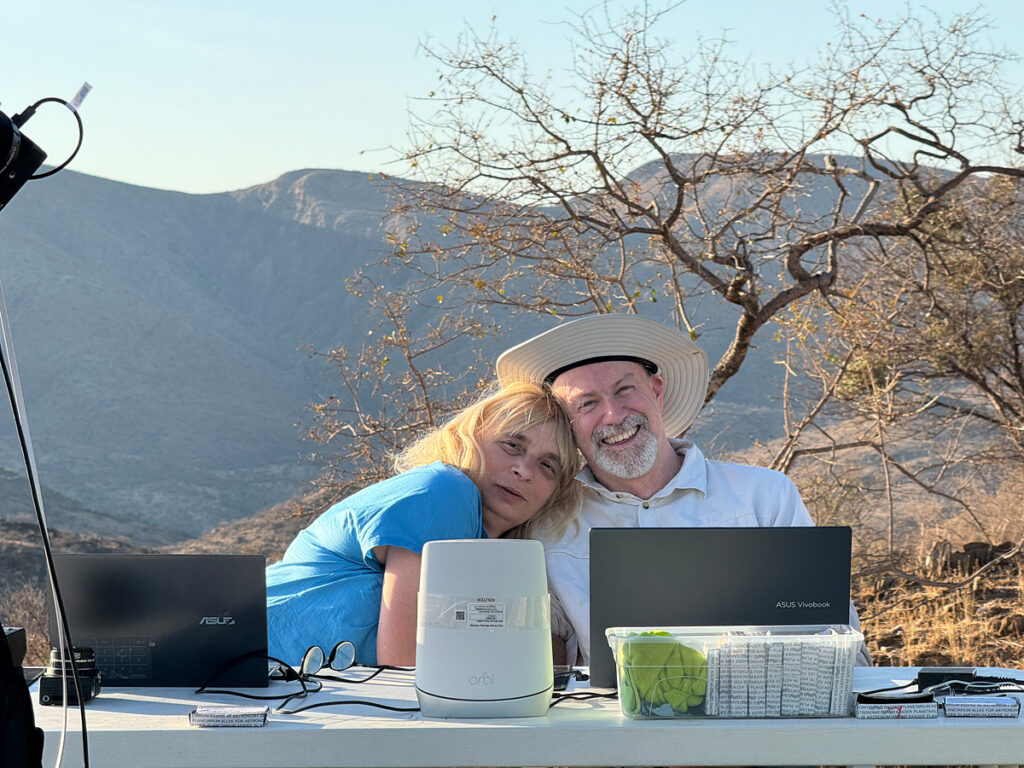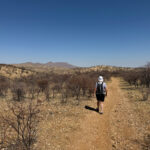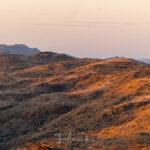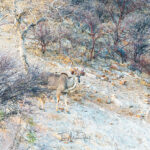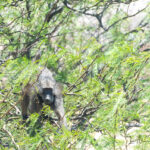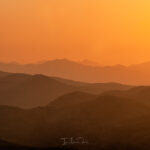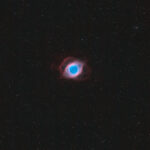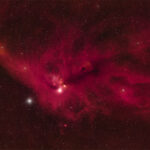On the road at the Hakos Astro Guest Farm in Namibia
Even in the early days of our astrophotography journey, while dealing with the issue of light pollution, the word “Namibia” would occasionally come up. Back then, however, it seemed like something surreal and, if anything, very far off in the future. On all of our travels to many beautiful places around the world, we had always skipped Africa—perhaps even avoided it. Not because the continent isn’t enticing to visit, but for one, there were so many other places on our list. And for another, perhaps we subconsciously knew we’d be “infected” by the “Africa virus,” discovering a new place to yearn for.
Here’s a small spoiler right from the start… our “fear” was well-founded.
Still, the idea of going there one day came up in many conversations. The thought of experiencing a sky untouched by light pollution was one part of it, but the other was the dream of finally seeing the southern night sky.
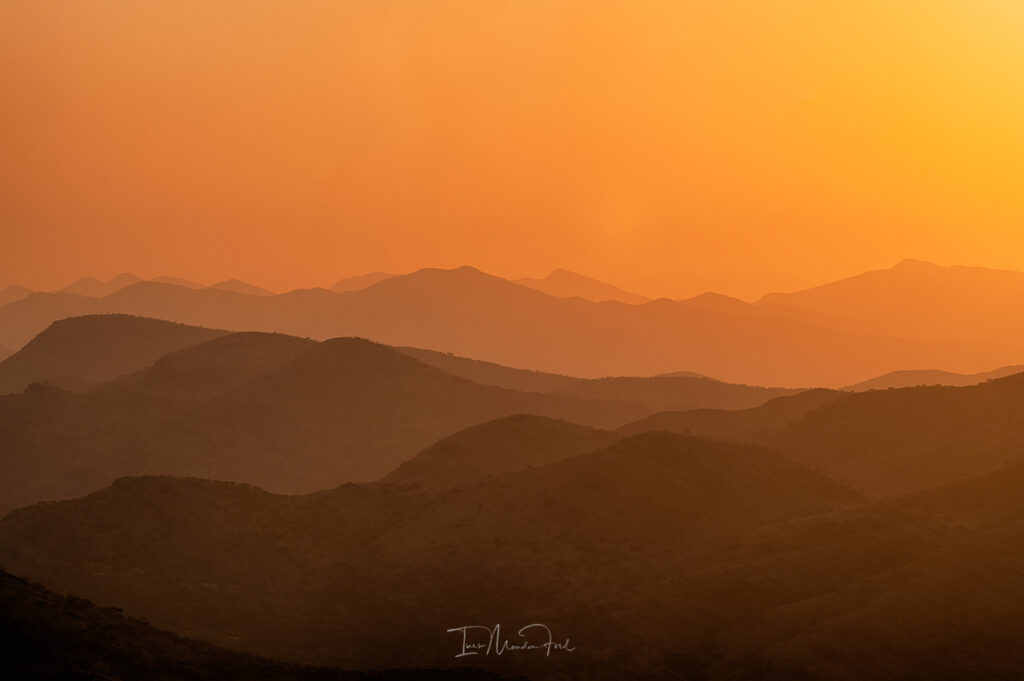
After enjoying a few good nights in Spain and Croatia this year but otherwise having little luck with the weather for astrophotography, we started seriously discussing a trip to Namibia. After extensive research and numerous emails, our decision was made: in 2025, we’ll be heading to Hakos, an astro-farm in the mountains southwest of Windhoek, located on Namibia’s Great Escarpment between the Savannah High Plateau and the Namib Desert. We booked for May 2025 and, almost a year in advance, began looking forward to it.
Even though Mark had the chance to collect some data via a remote station, and despite continuing to chase clear new moon skies across Europe without much success, frustration started to set in due to the lack of astrophotography opportunities. The longing to once again stand under a clear night sky with our equipment grew, and some wild ideas began to surface.
One of those ideas was “Namibia” this year—and the longer we thought about it, the less crazy it seemed. When we discovered, to our surprise, that there were still openings in September, we quickly and spontaneously made the booking.

The biggest challenge at first was safely transporting all our equipment to Namibia. We chose a direct flight to minimize the risk of loss or damage. Even so, it was quite the challenge to check in two 10Micron GM1000 HPS mounts, a Celestron RASA 11, an Askar TS 94EDPH, and all the various accessories, cameras, computers, and so on, along with our personal luggage. But initially, everything went fairly smoothly—or so we thought… until we reached the security checkpoint.
We had the two counterweight rods in our carry-on luggage, which turned out to be an issue—they were deemed too dangerous. A small debate played out in our minds: after all, a telephoto lens with a camera is just as heavy and solid, but apparently, that isn’t a problem. However, we decided not to actually argue the point—better not to risk having more “dangerous items” flagged. This meant Mark had to go through the entire process again, starting by going back to check in an additional piece of luggage and then rejoining the security line in the “right direction.” Luckily, we had accounted for potential delays and arrived at the airport well in advance of our flight.
Eventually, we managed to get everything sorted and boarded the plane. About 10 hours later, we landed in Windhoek. The immigration process was relatively slow but overall went smoothly. Roughly an hour after landing, we were standing in the Namibian sunshine with all our crates, suitcases, and bags. Right away, we were warmly greeted by Friedhelm.


The airport in Windhoek is tiny, and the number of planes that take off and land there daily can be counted on “one hand”. However, the outdoor restaurant is nice, and since we were waiting for two guys from Denmark who were arriving on the second flight from Frankfurt, we had the chance to grab a much-needed coffee.
Then it was time to go. We got in the car headed for the farm—our adventure was about to begin. We made a quick stop to see the Christ Church, the landmark of Windhoek, and then started our journey. First, we traveled on paved roads, but later switched to gravel tracks on the way to Hakos. Tired yet full of curiosity, we soaked in this barren, dry, but simultaneously fascinating landscape. Monkeys by the roadside, a kudu in the distance, and—oh, look—two giraffes. Welcome to Africa.
We don’t know if this drive will ever feel boring, but for now, that seems impossible, as every view feels wonderful.
When the farm finally appeared in the distance, with the sign reading “Hakos,” it already felt like we had left behind all the things that define daily life—work, stress, and everything else. This feeling of leaving it all behind would only deepen the longer we stayed.
The Hakos family gave us a very warm welcome, and even though we hadn’t met any of them before, we immediately felt comfortable and at home.
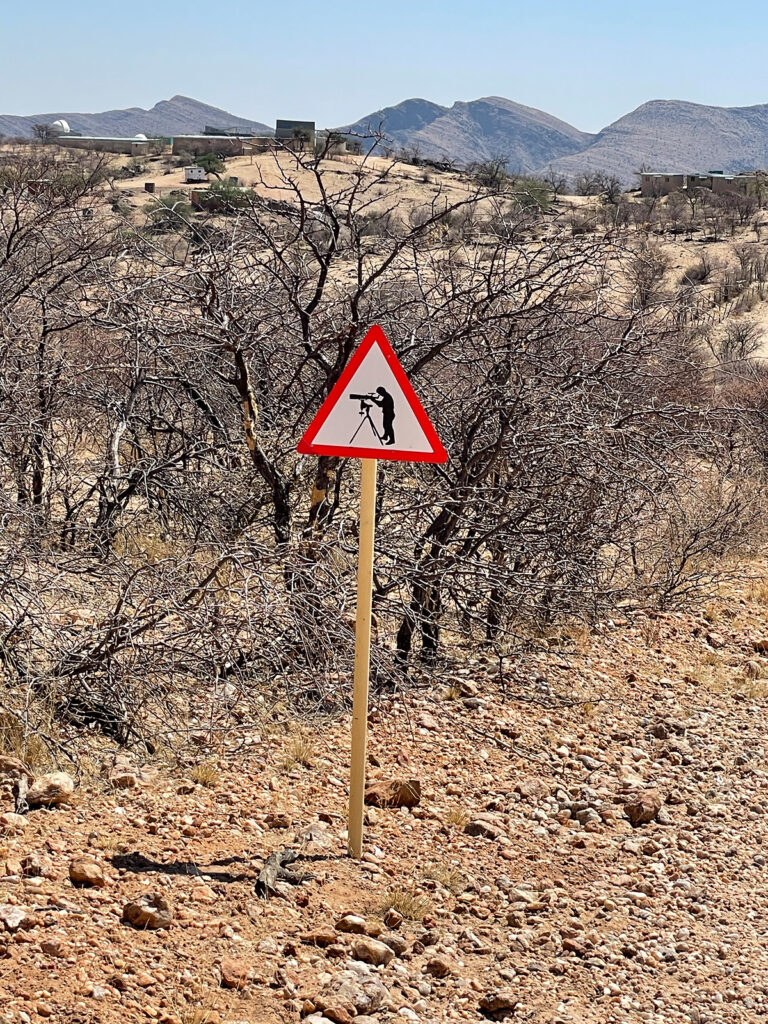


All our equipment appeared to have survived both the flight and the bumpy car ride without issue, and by the first afternoon and evening, everything was already set up.
As the sun began its slow descent toward the horizon, the shadows grew longer, and evening approached, we experienced for the first time the incredibly beautiful and unique light of Namibia—a light unlike anything we’d ever seen before. It’s not just something you see; it’s something you feel. Welcome to Africa. Our first dinner at sunset, with a view of the silhouettes of the Hakos Mountains and the Gamsberg, enjoyed in such wonderful company, perfectly rounded off our overwhelmingly positive first impressions.
Typical of a region just 23 degrees south of the equator, there’s no long twilight. The sky transitions rapidly from deep orange to cyan blue and then to the darkness of night. And this night—this first night—was something we were eagerly anticipating.
Although we live in a rural area, it’s one with significant light pollution. Over the years, we’ve still managed to experience truly impressive skies, such as Bortle Scale 2 conditions in Croatia, Spain, and parts of France. But that only made our excitement even greater, as we could hardly wait to see this sky. And that first upward glance will forever remain unforgettable.
The brilliance of the Milky Way, its galactic center, and Scorpius directly overhead; the unfamiliar constellations of the southern sky; stars reaching almost to the horizon—it was a breathtaking, goosebump-inducing experience that we’ll never forget. To the west, we saw the zodiacal light—something we’d read about and seen pictures of but had never witnessed in person. It’s one of those phenomena you know exists, but somehow, you don’t expect to actually experience it yourself.
Our first stay at the Hakos Farm was absolutely wonderful—so much so that we spontaneously decided to return just eight weeks later.
The nights during both our August/September and October/November visits were mostly good. A few times, we had to deal with very strong winds, and during our second stay, we also encountered cloudy skies on two occasions. The latter is normal for this time of year, which is known as the “small rainy season,” so overall, we were quite lucky. The wind, however, is something you just have to work around. Wind can be particularly challenging for the RASA11 mounted on a GM1000, even at the best of times, and at Hakos strong gusts are not uncommon.
Nighttime temperatures varied greatly. During our first visit, some nights were as cold as single digits (Celsius), and we were grateful to have packed warm clothing. On the second trip, there were nights when the temperature didn’t drop below 20°C, making for rather warm conditions.
It also turned out that the RASA 11 wasn’t a fan of the long flight and bumpy gravel road—it needed to be re-collimated. Fortunately, Mark has the patience, endurance, and a good deal of experience to handle that, and since he knows the scope so well, he managed to get it back in shape really quite quickly.
Anticipating potential problems with our uncooled SIGMA fp L cameras on the warmer nights, Mark switched to a new Moravian C1X-61000M on the RASA 11 (visible in the second image below), which in any event meant that a new camera train had to be installed.
The time we spent on the farm was nothing short of wonderful, and we cherished every moment. Life on Hakos flows seamlessly from one day to the next, and you naturally adapt to the rhythm of nature and the stars. Nights are spent at the telescopes, either actively observing or letting pre-programmed sequences run. At sunrise, the systems are shut down, the equipment is covered up (with reflective covers to protect it from the intense daytime sun), and then it’s time for a bit of rest—or perhaps a hike—followed by a leisurely late breakfast. The day continues with backing up images, catching some more sleep, and enjoying coffee and cake, where you meet the many friendly people on the farm. In the early evening, the telescopes are unpacked again, and as the sun sets, a glass of wine on the terrace sets the mood before a delicious and varied dinner in wonderful company. And then the cycle begins anew.
During our time on Hakos, we met many fascinating and amazing people—fellow astrophotographers and stargazers, astronomy enthusiasts, travelers passing through, and friends of the Hakos family. Each encounter was engaging and memorable.
The animals on the farm also quickly captured our hearts, especially the cats Mischka and Paulchen, and of course, Morn the dog, who often kept us company (or was it that he kept guard – we weren’t really sure) during the long nights.
For anyone considering a visit to this astrophotography haven, let me say: you’ll be in excellent hands. Whether you’re a casual astronomy enthusiast joining one of the high-quality stargazing tours, an observer, or an astrophotographer, the support and assistance provided are exemplary. Nearly any issue, big or small, related to equipment or technical setups, can likely be resolved. The accommodations and meals are wonderful, leaving nothing to be desired.
Speaking of food, it’s worth mentioning something quite remarkable: Nearly all the meat served on the farm comes from animals hunted and prepared on-site. Even Ines, a long-time vegetarian, appreciated this fact. While she still didn’t eat the meat, we both agreed that this approach is entirely ethical. The animals live free and well, the meat is free of antibiotics and hormones, and only what is needed is hunted, with every part being used. Mark, for his part, enjoyed trying new dishes.
A real highlight were the sunrises. As nature photographers, we already have a deep love for these moments—the time when nature awakens and the light changes minute by minute is simply magical. Experiencing this in Namibia was always something truly special. In the twilight of the departing night, we could watch the mountain zebras drinking at the waterhole—the same zebras whose hoofbeats accompanied us through many nights. Then the kudus would arrive, and the first birds of the day would start their songs. The light was unbelievably beautiful, with countless shades of gold, the Earth’s shadow visible, and a very unique atmosphere …
When the sun finally rose over the mountains, it bathed the landscape in a deep golden light, though only for a brief moment. Soon after, you could already feel the heat of the sun taking over. Equally stunning were the sunsets. Each day on Hakos ended with a breathtaking explosion of orange, red, and gold hues. You find yourself wanting to freeze time, to hold onto these fleeting moments, but you know that’s impossible. The consolation is that this spectacle repeats itself every single day, independent and oblivious of us, far into a future beyond our own lifetimes and imaginations.
As day gave way to night, and the Milky Way—with its incredible magic—moved across the sky, we felt nothing but awe and gratitude for the beauty of our world.
Many nights, we were accompanied by the relatively new SIGMA 15mm F1.4 DG DN Diagonal Fisheye | Art lens, which is perfect for Milky Way photography. We captured a timelapse of one of those incredible nights, which is dedicated to Ines’s father, who unfortunately passed away peacefully at home during one of the nights we spent on Hakos.
When you embrace life in this landscape, it offers so much to discover. It’s vastly different from what we’re used to in Central Europe—no shade-giving trees, very little greenery at this time of year, and at first glance, it seems barren and inhospitable. The sun’s UV rays burn down relentlessly, and no one should venture onto the numerous and exciting trails without carrying plenty of water.
Within the farm, however, there are blooming plants, including some species that seemed very exotic to us. Water is incredibly precious here—when we visited, it hadn’t rained a single drop in five months, and it felt like a miracle that the trees, animals, and plants could survive in such conditions.
The wildlife was fascinating and exotic. During a farm tour (the farm covers ca. 70 square kilometers), another highlight that we thoroughly enjoyed, we saw a variety of animals—blue duikers, kudus, and oryxes, to name just a few.
The monkeys, visible in the trees, along the paths, and near the waterhole, often amused us, and at least Ines made a habit of watching for them daily. A particular thrill was coming across scorpions at night with a UV lamp—it’s fascinating how they glow under the light.

We also had the chance to enjoy two “Sundowner Drives”, one to “Walter’s Point” and the other to the “Lone Tree.” Both are stunning destinations with breathtaking views. Both locations can also be reached by hiking, and we made the trek to Walter’s Point on foot. From there, an endless view of mountain ranges stretching to the Namib Desert unfolds before you.
At the end of August and early September, wildfires—especially in Angola—caused a lot of smoke and dust in the air. While this slightly impacted the clarity of the skies, it also made for particularly vibrant and spectacular sunsets.
But the sunsets are always a daily spectacle here, and we found ourselves photographing more of them than ever before.
Astrophotography was, of course, the primary reason for our stay on Hakos, and it occupied much of our time each day in one way or another. The dark skies, high altitude, and extremely low humidity make this region one of the best in the world for astrophotography (and, naturally, stargazing). Our expectations were accordingly high, and apart from a few nights when the wind was too strong and two nights of cloud cover, those expectations were met—and even exceeded.
One of the highlights was targeting objects that are simply impossible to capture from the Northern Hemisphere. Additionally, we focused on faint objects where we hoped the dark skies would give us a significant advantage. Some of these projects are still incomplete, as we haven’t gathered all the necessary data yet. These will be continued on our next visit.
Here is a small selection (click for larger view) of the astrophotos we captured in August/September and October/November of 2024. More details about the images can be found by following the links below the images. During our second visit, the seeing conditions were even better, thanks to reduced smoke in the atmosphere. This was noticeable not only in the sunsets, which were clearer, but also in the sharp, high-contrast view of the Gamsberg, a prominent mountain in the area.
While the Milky Way had already started setting during our second visit, the Magellanic Clouds rose brightly and high in the sky—a truly awe-inspiring sight. Each season of the year seems to have its own unique appeal, both in the skies and on the ground. The different opportunities for astrophotography and observation, as well as the changing vegetation and its colors, offer endless variety.
In the long run, we’ll likely need to visit Hakos at different times of the year to fully experience all it has to offer.
We collected many impressions—visual, emotional, and of course, through the camera. On our first visit, in addition to the SIGMA 15mm F1.4 DG DN DIAGONAL FISHEYE | Art lens, we also used the SIGMA 70-200mm f2.8 DG OS HSM | Sports lens, which worked well for landscape details, but for wildlife photography, it was sometimes a bit too short. That’s why, on our second visit, we brought the SIGMA 100-400mm F5-6.3 DG DN OS | Contemporary lens along.
During our second stay, Mark had his birthday, and it was a celebration we’ll remember for a long time. The wonderful people at Hakos made it an incredibly special day for him and us. With congratulations, singing, cake, delicious company, and the stunning starry sky—what more could you ask for on a birthday? All in all, we have nothing but positive things to say, and Hakos has already secured a place in our future travel plans, but especially in our hearts.

There’s so much more we want to discover—both around Hakos and in Namibia in general. We miss so many things: the warm days, the barren landscape, the unique light, the sunsets, the nights at the telescope, the sound of zebras in the dark, the glass of wine to end the night under the stars, and, most of all, the wonderful people (and animals) of the Hakos family.
